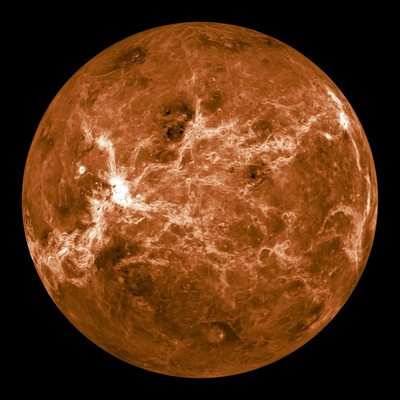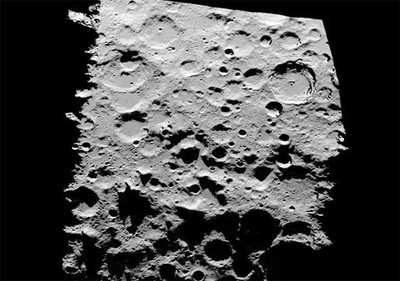Missions To Venus, An Asteroid Or The Moon
Possible
 NASA has selected three proposals as candidates for the
agency's next space venture to another celestial body in our solar
system. The final project selected in mid-2011 may provide a better
understanding of Earth's formation or perhaps the origin of life on
our planet. The proposed missions would probe the atmosphere and
crust of Venus; return a piece of a near-Earth asteroid for
analysis; or drop a robotic lander into a basin at the moon's south
pole to return lunar rocks back to Earth for study.
NASA has selected three proposals as candidates for the
agency's next space venture to another celestial body in our solar
system. The final project selected in mid-2011 may provide a better
understanding of Earth's formation or perhaps the origin of life on
our planet. The proposed missions would probe the atmosphere and
crust of Venus; return a piece of a near-Earth asteroid for
analysis; or drop a robotic lander into a basin at the moon's south
pole to return lunar rocks back to Earth for study.
NASA will select one proposal for full development after
detailed mission concept studies are completed and reviewed. The
studies begin during 2010, and the selected mission must be ready
for launch no later than Dec. 30, 2018. Mission cost, excluding the
launch vehicle, is limited to $650 million.
"These are projects that inspire and excite young scientists,
engineers and the public," said Ed Weiler, associate administrator
for the Science Mission Directorate at NASA Headquarters in
Washington. "These three proposals provide the best science value
among eight submitted to NASA this year."
Each proposal team initially will receive approximately $3.3
million in 2010 to conduct a 12-month mission concept study that
focuses on implementation feasibility, cost, management and
technical plans. Studies also will include plans for educational
outreach and small business opportunities.
The selected proposals are:
The Surface and Atmosphere Geochemical Explorer, or SAGE,
mission to Venus would release a probe to descend through the
planet's atmosphere. During descent, instruments would conduct
extensive measurements of the atmosphere's composition and obtain
meteorological data. The probe then would land on the surface of
Venus, where its abrading tool would expose both a weathered and a
pristine surface area to measure its composition and mineralogy.
Scientists hope to understand the origin of Venus and why it is so
different from Earth. Larry Esposito of the University of Colorado
in Boulder, is the principal investigator.

The Origins Spectral Interpretation Resource Identification
Security Regolith Explorer spacecraft, called Osiris-Rex, would
rendezvous and orbit a primitive asteroid. After extensive
measurements, instruments would collect more than two ounces of
material from the asteriod's surface for return to Earth. The
returned samples would help scientists better undertand and answer
long-held questions about the formation of our solar system and the
origin of complex molecules necessary for life. Michael Drake, of
the University of Arizona in Tucson, is the principal
investigator.
MoonRise: Lunar South Pole-Aitken Basin Sample Return Mission
would place a lander in a broad basin near the moon's south pole
and return approximately two pounds of lunar materials for study.
This region of the lunar surface is believed to harbor rocks
excavated from the moon's mantle. The samples would provide new
insight into the early history of the Earth-moon system. Bradley
Jolliff, of Washington University in St. Louis, is the principal
investigator.

The proposals were submitted to NASA on July 31, 2009, in
response to the New Frontiers Program 2009 Announcement of
Opportunity. New Frontiers seeks to explore the solar system with
frequent, medium-class spacecraft missions that will conduct
high-quality, focused scientific investigations designed to enhance
understanding of the solar system.
The final selection will become the third mission in the
program. New Horizons, NASA’s first New Frontiers mission,
launched in 2006, will fly by the Pluto-Charon system in 2015 then
target another Kuiper Belt object for study. The second mission,
called Juno, is designed to orbit Jupiter from pole to pole for the
first time, conducting an in-depth study of the giant planet's
atmosphere and interior. It is slated for launch in August
2011.
 Airborne 04.16.24: RV Update, Affordable Flying Expo, Diamond Lil
Airborne 04.16.24: RV Update, Affordable Flying Expo, Diamond Lil ANN's Daily Aero-Term (04.20.24): Light Gun
ANN's Daily Aero-Term (04.20.24): Light Gun Aero-News: Quote of the Day (04.20.24)
Aero-News: Quote of the Day (04.20.24) Aero-News: Quote of the Day (04.21.24)
Aero-News: Quote of the Day (04.21.24) ANN's Daily Aero-Term (04.21.24): Aircraft Conflict
ANN's Daily Aero-Term (04.21.24): Aircraft Conflict





